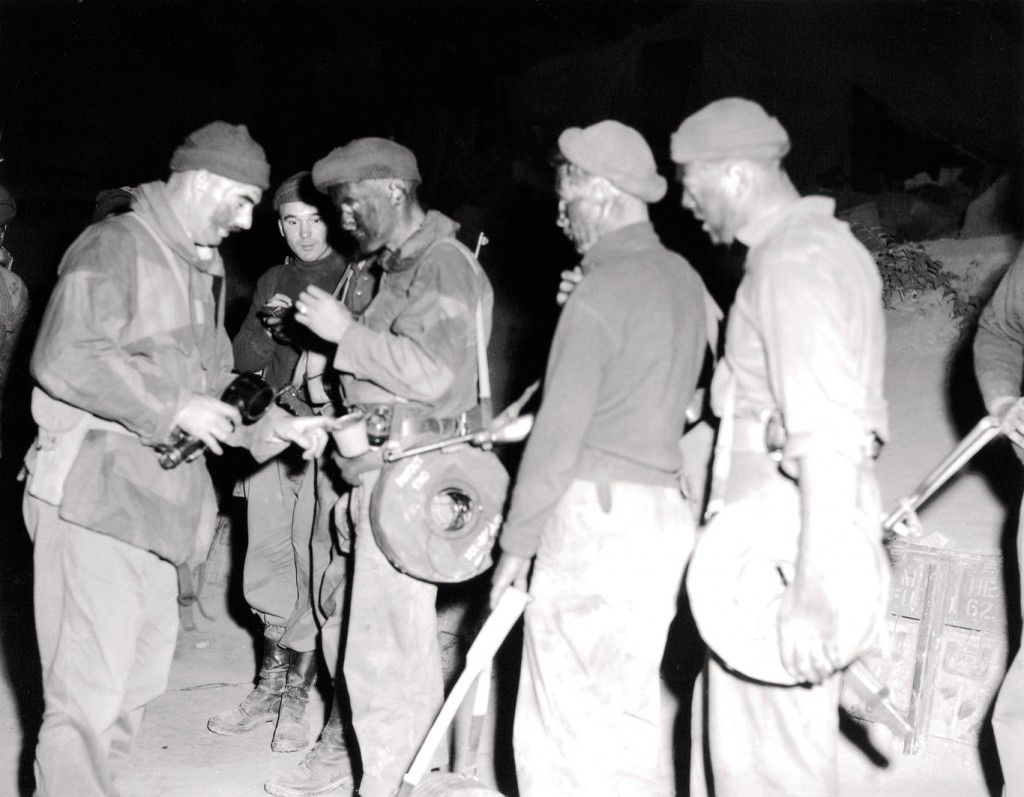
Two new strategies were employed, one to get enemy soldiers to give away their positions, and the other to capture prisoners for interrogation. The troops labelled them jitter and snatch patrols.
“They had fighting patrols, snatch patrols and jitter patrols…you had to take turns,” said John Sadler in a Memory Project interview.
The jitter patrol was an innovation of the Royal Canadian Regiment that, for at least a brief time, provided information for artillery and infantry attacks on enemy positions.
The first was recorded on the night of May 28. “The use of Jitter patrols by 1 RCR are proving effective,” according to the brigade war diary.
A jitter patrol was small, no more than a dozen men. They moved furtively toward enemy lines at night. “When they are sufficiently near to the enemy to arouse his suspicion, they get down in a firing position and open up with every weapon at their disposal,” says the diary.
This gave the impression the group was much larger, and an attack was imminent. Enemy troops became alarmed and returned fire, giving away their position. The Allied patrol slinks away and sets up an ambush for enemy troops that follow.
“The RCR are now using these patrols practically every night with considerable success. They are obviously making the enemy jittery, and they are gaining valuable information about the enemy strength at various enemy-held positions.”
The ruse worked half a dozen times before the enemy figured it out. When the Royal 22 Regiment jitter patrolled on June 12-13, Chinese troops did not take the bait and return fire. After June 22, the RCR abandoned jitter patrols.
On May 17, the Canadian Brigade was instructed to mount at least one fighting patrol a week expressly to capture prisoners for interrogation. Early experiences showed they were to be costly and unrewarding enterprises.
One man was killed and four wounded in a patrol on May 20 by a Princess Patricia’s Canadian Light infantry unit; six were wounded and one man went missing during a patrol by the RCR May 22; two men of the Royal 22nd Regiment were wounded in a firefight in a raid on May 26-27. On May 31, an RCR patrol managed to snag a prisoner—who was killed while trying to escape.
The Canadian Brigade carried out more than 43 ambush and 20 fighting patrols in May, says the official army account Canada’s Army in Korea 1950-53. These frequent and aggressive patrols “failed in their primary purpose,” wrote William Johnston in A War of Patrols: Canadian Army Operations in Korea. “As the enemy learned to anticipate our actions, it became more difficult to take him alive.”
Advertisement










